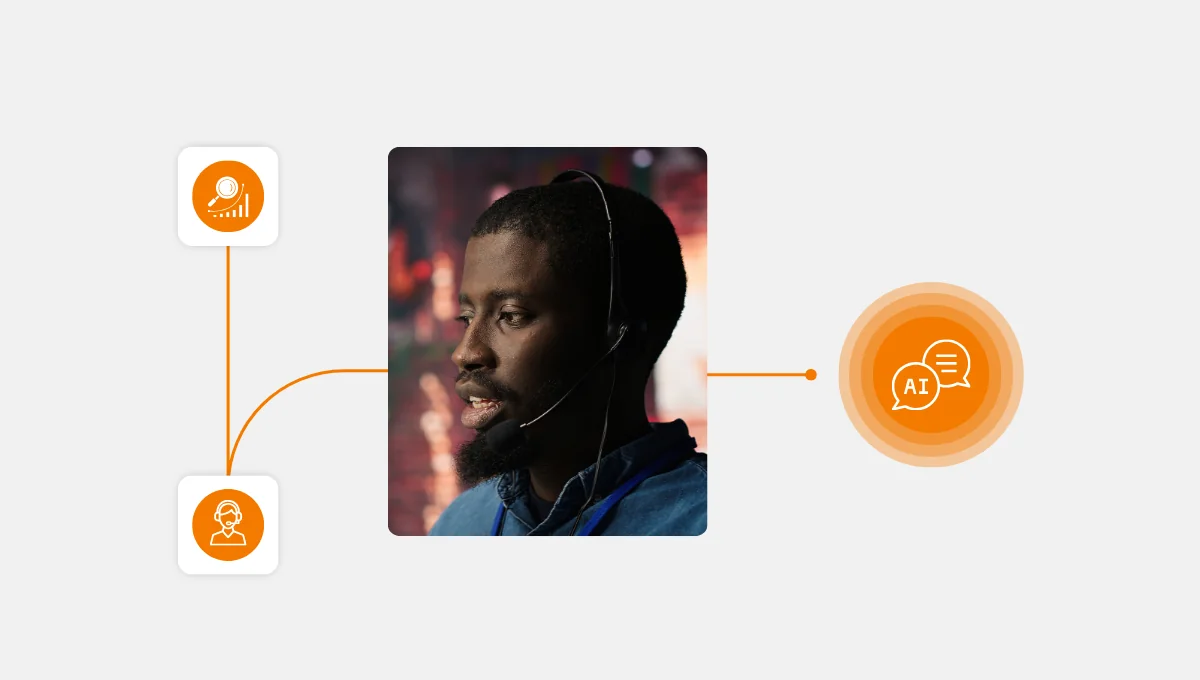Companies that are good at understanding customer feelings made 43% more in stock value than others over five years, and they use sentiment analysis to bring emotional intelligence into customer service.
Industry leaders have been integrating sentiment analysis into their operations to enhance customer experience and business performance👇🏼
🏦PayPal uses AI-powered sentiment analysis, which enables a real-time understanding of customer emotions, allowing the company to adjust its service strategies promptly.
💄Estée Lauder employs generative AI to enhance customer service by accurately classifying customer care calls and swiftly resolving issues. This approach provides valuable insights for product and digital development, contributing to improved customer satisfaction.
To cut it short, sentiment analysis is here to translate emotions into digestible data bites so companies have a chance to manage them.
Do you also look for a system to measure your company’s Customer Experience?
Discover our Customer Experience Software or request a free demo of CX Insight.
The Basics of Sentiment Analysis
Sentiment analysis is the process of using natural language processing (NLP) and machine learning to determine the emotional tone behind a piece of text.
In customer service, that text is typically a customer’s message—whether it’s a live chat, email, social media post, or call transcript
The goal is simple: understand how the customer feels. Are they frustrated, satisfied, confused, or angry?
Sentiment analysis helps businesses decode emotions at scale, across thousands of interactions, giving customer service teams insight into how they’re doing and where they can improve.
How AI-Driven Tools Analyze Customer Emotions
Modern sentiment analysis tools use AI to read between the lines of customer communication. They analyze not just what’s being said, but how it’s said.
Imagine a large telecom provider receiving thousands of support calls daily. One afternoon, their sentiment analysis tool picks up a spike in negative sentiment scores related to billing issues.
- Text Processing: A customer says on a call, “I’ve already called three times about this extra charge!” The AI breaks down this sentence, recognizing emphasis in “already” and “three times.” It identifies key complaint-related phrases like “extra charge” and “called three times.”
- Emotion Detection: The frustrated tone, punctuation, and repeated complaints indicate that this message carries strong negative emotions—specifically frustration and impatience. The presence of exclamation points and urgency in phrasing further supports this.
- Sentiment Scoring: The tool assigns a -0.85 score to this message (on a scale from -1 to 1), categorizing it as highly negative. This score is based on the tone, context, and keywords used in the conversation.
- Trend Analysis: The system notices that over the past 48 hours, 300+ interactions involving the billing department have shown similar emotional patterns. It detects keywords like “overcharged,” “billing mistake,” and “unexpected fee” repeatedly. This trend triggers an alert to the customer service manager, prompting an internal investigation. The billing department discovers a glitch in the invoicing system affecting thousands of users.
By using AI-powered sentiment analysis, companies can monitor and understand customer sentiment in real-time, which is impossible for humans to do manually at scale.
As you see, staying connected is the new black. That is why you are coming across Omnichannel Strategies and Conversation APIs everywhere (that’s included)
The Benefits of Using Sentiment Data
By using sentiment analysis in customer service companies follow their metrics and turn data into smarter interactions. The basic benefits of using sentiment data are enhancing interactions and improving customer satisfaction.
-
Enhance Interactions by Personalizing Responses
Just taking a look at Deloitte‘s findings shows how personalization affects customer satisfaction metrics and others

Since customer support reps can be guided by emotional cues through sentiment analysis, you can tailor conversations and provide personalized support. Thanks to that, your company may hope to win all the metrics above.
Picture this: if sentiment is positive, the AI can suggest cross-sell opportunities. If it’s negative, the focus stays on resolving the issue fast. This kind of emotional intelligence in call centers can help reps respond not just to the problem, but to the person behind it.
AI for customer engagement doesn’t mean replacing humans; it means giving them tools to engage smarter. Personalized, emotionally aware responses show customers that they’re heard and understood.
-
Improve Overall Customer Satisfaction
When you understand how customers feel, you can design better experiences.
Once Again is a France-based online second-hand shopping website. The company improved its email conversion rate by approximately 40% by improving customer satisfaction through sentiment analysis practices.
Customer sentiment tracking helps identify pain points, spot trends, and uncover issues before they escalate.
For instance, if sentiment analysis flags a spike in negative emotions tied to a new product rollout, the service team can alert product managers immediately. Or if certain agents consistently generate positive feedback, that insight can be used to train others.
Sentiment insights also power more accurate customer satisfaction metrics. Instead of relying solely on post-interaction surveys (which few customers complete), companies can measure satisfaction through actual conversations—no extra input is needed.
In short, improving customer experience with AI starts with understanding how people feel, and using that data to drive smarter decisions.
Step-by-Step: How to Implement Sentiment Analysis in Customer Service
If you’re looking to adopt sentiment analysis, follow this roadmap to get started:
- Gather Your Data: Collect transcripts from calls, chats, emails, and other customer interactions. The more text data you have, the better your sentiment analysis tool will perform.
- Choose the Right Tool: Look for platforms that offer real-time sentiment analysis, robust NLP capabilities, and easy integration with your existing CRM or customer support software.
- Train the AI (If Needed): Some platforms come pre-trained on general sentiment. Others allow you to customize based on industry terms, slang, or product-specific language. This step ensures your AI understands your customers’ unique vocabulary.
- Monitor and Analyze: Once the system is in place, start monitoring sentiment across channels. Set benchmarks. Identify trends. Track how sentiment shifts over time or in response to specific changes.
- Act on Insights: Use collected data wisely. Improve scripts, update training, address recurring problems, and tailor outreach based on sentiment trends.
Sentiment analysis is a great tool for diagnosing your customers’ pain points and behavior, but it is also a great tool for continuous improvement. Use sentiment data to track progress and answer the following questions—and thank us later.
- Has customer satisfaction improved?
- Are escalations down?
- Are reps resolving issues faster?
No matter what your industry and company scale is, you can track, measure, personalize, and improve your customer support with sentiment analysis.
Visit Call Center Studio’s AI Features to start your sentiment strategy.
P.S. It’s cloud-based and easy to integrate.




